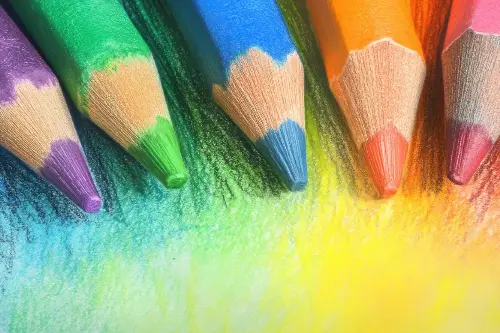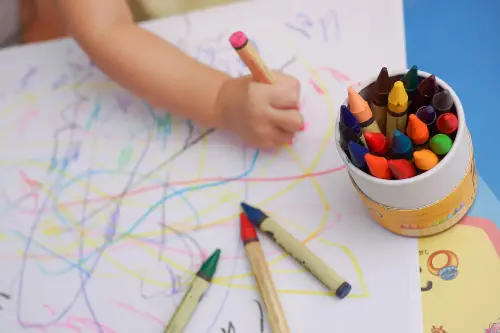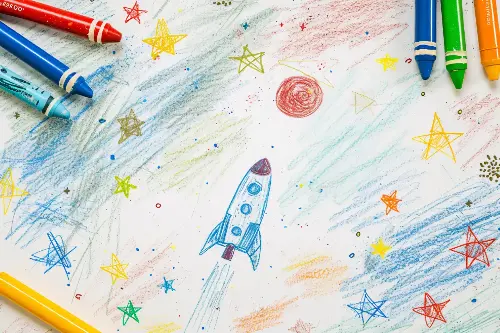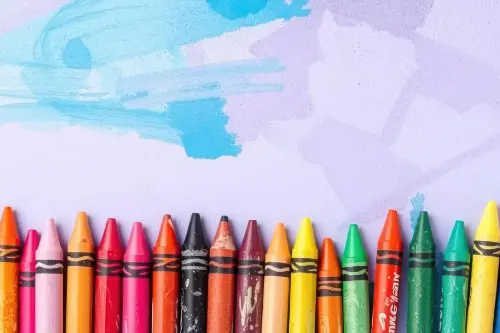For most of us, the humble crayon is a gateway to the world of art, reminiscent of childhood afternoons spent scribbling on scrap paper. But what if we told you that crayons are making a sophisticated comeback, no longer confined to the realm of child’s play? Across the globe, artists are reimagining this waxen medium to breathtaking effect, creating splendid landscapes that speak of skill, patience, and a flair for the vibrant.

An Accessible Art Form for All
Crayon art is delightfully democratic; its accessibility is its charm. Unlike oil paints that require a nuanced understanding of mediums, or watercolours that demand a delicate hand, crayons are forgivably straightforward. No mixing, no priming—just pure colour at your fingertips. And because they are relatively inexpensive and available in a rich array of colours, crayons are an appealing medium for artists, both budding and established, irrespective of age or skill level.
One might not immediately think of crayons as capable of the nuanced colour play that characterises great landscapes. But through skilful layering and blending, artists have been able to achieve depth and subtlety that rivals that of more 'serious' art mediums. The variety of crayon shades available today is staggering. One can find sets ranging from basic eight-colour packs to elaborate collections featuring hundreds of hues, offering a spectrum as broad as that of any painter's palette.

Techniques and Textures
Creating landscapes with crayons requires a keen eye for texture. Techniques such as cross-hatching, back-and-forth strokes, and scumbling (scratching the surface to create texture) allow artists to mimic the intricacies of foliage, the roughness of rocks, and the serenity of skies. Some artists incorporate other materials, like paper tearing and collage, to introduce additional layers and textures that heighten the visual appeal of their crayon landscapes.
One of the delights of working with crayons is blending—melding colours to form new hues, creating soft transitions from one tone to another. This is where landscapes come alive, as artists replicate the gentle gradations of a sunrise or the interplay of light and shadow over rolling hills. Blending can be achieved with the fingers, a piece of cloth, or even specialised tools made for the job. The resulting shades are often so smooth and so vivid that viewers are left in awe, questioning the medium of the artwork before them.
While many artists use crayons in their traditional form, others push the boundaries of the medium. Wax resist, where crayons are used in conjunction with water-based media to repel paint, creates striking effects of colour and brightness. Melting crayons is another avant-garde technique that turns the solid sticks into a flowing, malleable substance, allowing artists to pour and mould the wax into shapes and patterns that add a three-dimensional aspect to their landscapes.

Sustainability and Crayon Art
In today's eco-conscious world, the environmental impact of art materials is a growing concern. Crayons, often made of non-toxic materials, are a sustainable option for the environmentally mindful artist. Some brands offer crayons made of beeswax or soy, which are renewable resources. Moreover, crayon art, with its physical longevity and lack of need for expensive chemicals or additives, contributes to the sustainable art movement.
The therapeutic benefits of colouring have been well documented in recent years, with books and workshops dedicated to the practice. The rhythmic motion of applying crayon to paper, the focus required to stay within lines (or the freedom to venture outside them), and the joy of choosing from an array of colours can be a soothing escape from the stresses of daily life. As individuals craft their own crayon landscapes, they are not just creating art; they are participating in a meditative experience that can nurture well-being.
Crayon art, once completed, is as shareable and displayable as any canvas painting. Artists frequently showcase their works in galleries, craft fairs, and online platforms, often to the surprise and delight of those who underestimated the potential of this medium. Social media, with its visual emphasis, has been particularly instrumental in highlighting the striking beauty of crayon landscapes, inspiring others to pick up a box of crayons and embark on their own artistic journey.

A Return to Simplicity
Amidst the complexities of the art world, there's a certain charm in returning to a medium that symbolises simplicity. Crafting scenic landscapes with crayons strips away the pretensions that sometimes shroud the act of creation, reminding us that beauty can emerge from the most basic of tools. In a world eager for authenticity and connection, crayon landscapes offer an invitation to pause, reflect, and appreciate the joy of creating with colour.
Crayon art is a celebration of colour, an ode to the landscapes that inspire us, and a nod to the child within. Whether as a hobby or profession, crafting scenic landscapes with this intensely satisfying medium has the potential to captivate and heal, to transcend boundaries, and to colour our world in unexpected ways. For anyone seeking to explore their creative side without the intimidation of more complex art forms, crayon landscapes could be the perfect starting point.
